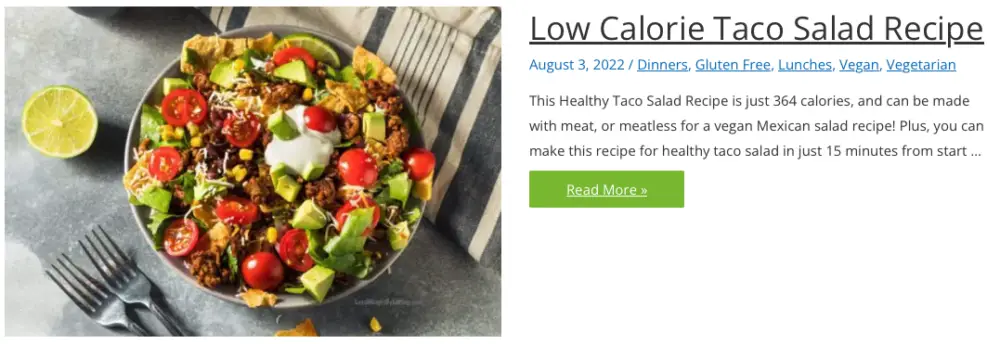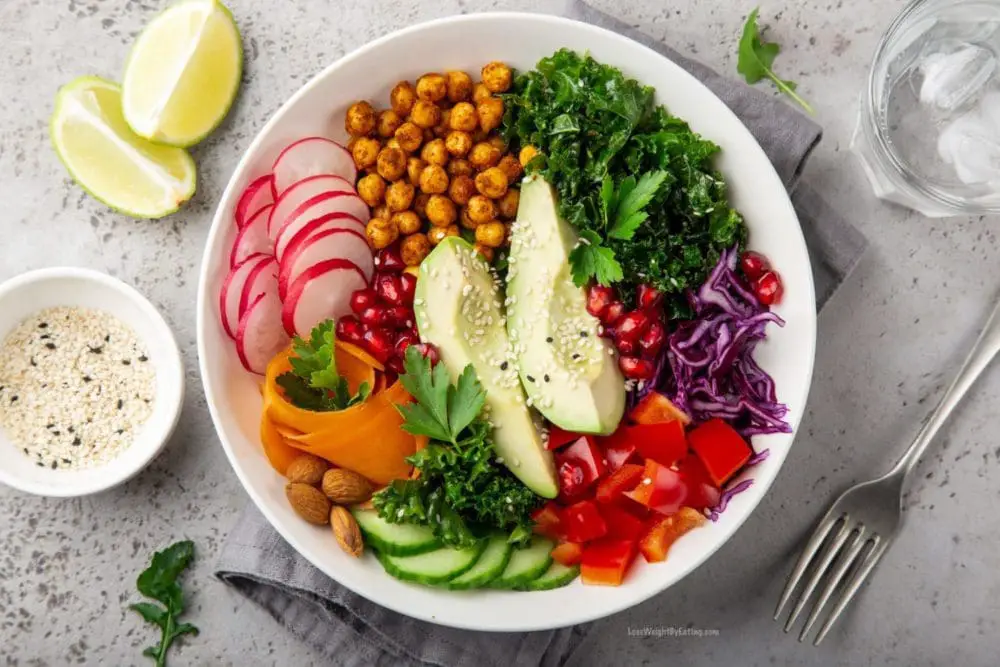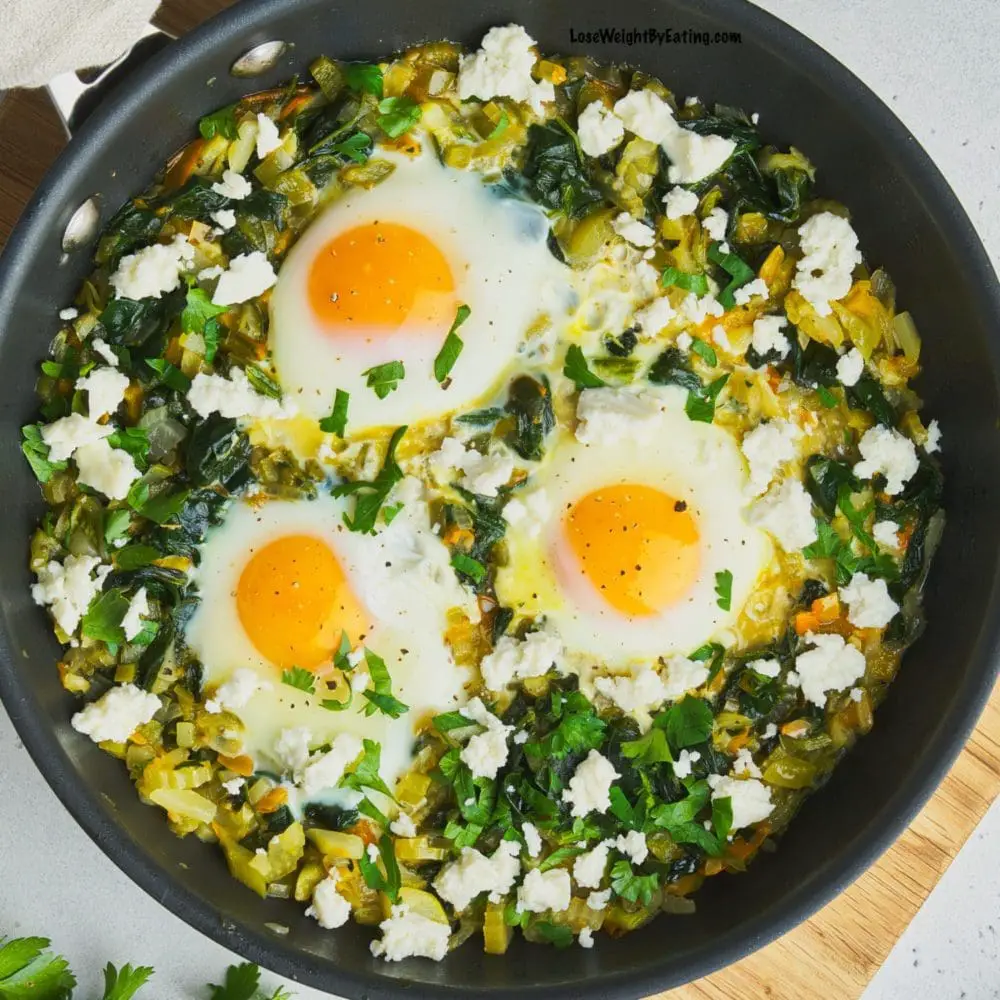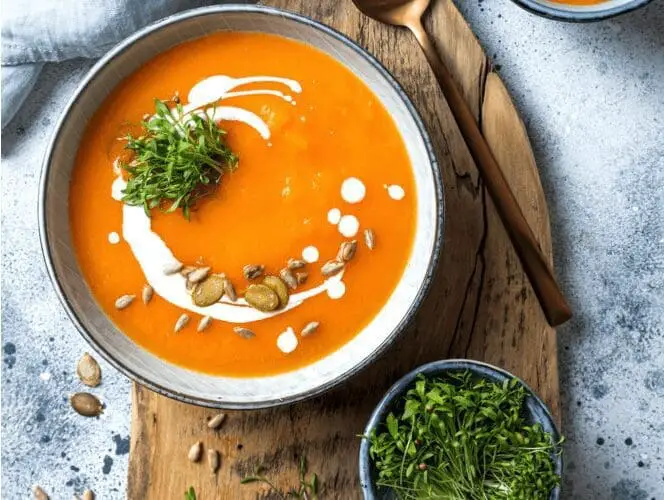Find the 10 Best Healthy Greens for Weight Loss, how to incorporate them into your diet. And even some healthy recipes with greens to help you lose weight.


These greens are not only low in calories but also packed with essential vitamins, minerals, and antioxidants that support overall well-being.
In this article, I’ll share the 10 best healthy greens for weight loss and discuss their nutritional benefits and how they can aid in your weight loss journey. So let’s dive in and discover the vibrant world of greens!
1. Spinach
Spinach, often regarded as Popeye’s favorite food, is an excellent choice for weight loss.
Packed with iron, calcium, folate, and vitamins A and C, spinach is a nutritional powerhouse.
This leafy green is also low in calories and high in fiber, which aids in digestion and helps you feel fuller for longer.
Whether you choose to enjoy it in salads, smoothies, or cooked dishes, spinach is a versatile green that can be easily incorporated into your diet.
2. Kale
Kale has gained tremendous popularity in recent years, and rightfully so.
This cruciferous vegetable is brimming with vitamins K, A, and C, along with minerals like manganese and calcium.
What sets kale apart is its exceptional antioxidant content, including the flavonoids quercetin and kaempferol, which help combat inflammation and oxidative stress.
With its robust flavor and sturdy texture, kale is an ideal addition to salads, stir-fries, and even as a crispy snack when baked in the oven.
3. Swiss Chard
Swiss chard, with its vibrant rainbow-colored stems and dark green leaves, is as visually appealing as it is nutritious.
This leafy green is a rich source of vitamins A, C, and K, along with magnesium, potassium, and iron.
Swiss chard’s unique phytonutrients, such as betalains, contribute to its anti-inflammatory properties.
It pairs well with both savory and sweet dishes, making it a versatile choice for those seeking variety in their meals.
4. Arugula
Arugula, also known as rocket, adds a delightful peppery kick to salads and other dishes.
This cruciferous green is rich in vitamins A, K, and folate, and contains nitrates that help lower blood pressure.
With its distinct flavor, arugula pairs perfectly with citrus fruits, cheese, and nuts, making it a fantastic choice for flavor-packed salads and sandwiches.
5. Collard Greens
Collard greens, a staple in Southern cuisine, are not only delicious but also highly nutritious.
Packed with vitamins A, C, and K, folate, and calcium, collard greens provide a range of health benefits. These greens are particularly high in soluble fiber, which aids in digestion and supports heart health.
Traditionally, collard greens are cooked with smoked meats, but they can also be enjoyed sautéed, steamed, or added to soups and stews.
6. Broccoli
Broccoli, often referred to as miniature green trees, is a cruciferous vegetable that boasts an impressive nutritional profile.
It is rich in vitamins C and K, folate, fiber, and antioxidants, including sulforaphane, known for its anti-cancer properties.
Broccoli can be enjoyed steamed, roasted, stir-fried, or added to salads and soups, providing a satisfying crunch and a burst of flavor.
7. Watercress
Watercress is a lesser-known green that deserves more attention for its incredible health benefits.
With its crisp texture and slightly peppery taste, watercress is a refreshing addition to salads and sandwiches.
It is a fantastic source of vitamins A, C, and K, and contains powerful antioxidants like beta-carotene and lutein.
Studies have also shown that watercress may have potential anti-cancer properties, making it an excellent choice for overall well-being.
8. Romaine Lettuce
Romaine lettuce, with its crisp leaves and mild flavor, is a popular choice for salads.
Despite its high water content, romaine lettuce is surprisingly rich in vitamins A, K, and folate, and provides a good amount of dietary fiber.
It serves as an excellent low-calorie base for salads, wraps, and even as a healthier alternative to bread in sandwiches.
9. Cabbage
Cabbage, available in various varieties such as green, red, and Napa, is a versatile and budget-friendly green.
It is packed with nutrients, including vitamins C and K, and compounds like glucosinolates, which have been associated with cancer prevention.
Cabbage can be enjoyed raw in salads, fermented as sauerkraut, or cooked in stir-fries, soups, and stews, adding a satisfying crunch and a touch of sweetness.
10. Microgreens
Microgreens, the tender young shoots of various vegetables and herbs, are gaining popularity for their intense flavor and concentrated nutrient content.
These miniature greens are harvested when they are just a few inches tall and packed with vitamins, minerals, and antioxidants.
Common varieties include microgreens of broccoli, kale, spinach, and radish.
They make a vibrant and nutritious addition to salads, sandwiches, and even as a garnish for various dishes.
How to Incorporate Healthy Greens into Your Diet
Adding healthy greens to your diet doesn’t have to be a daunting task.
With a little creativity and some simple tips, you can easily incorporate these nutrient-packed greens into your daily meals. Here are some ideas to help you get started:
Start with Salads
Salads are a fantastic way to enjoy a variety of greens. Begin by using a base of leafy greens such as spinach, kale, or mixed greens.
Then, add in colorful vegetables like tomatoes, cucumbers, bell peppers, and carrots for extra flavor and nutrients.
You can also incorporate lean proteins like grilled chicken or tofu, along with healthy fats from avocado or nuts.
Dress your salad with a light vinaigrette or a squeeze of lemon for a refreshing touch.
Blend in Smoothies
Smoothies are an excellent option for incorporating greens, especially for those who may not enjoy eating them raw.
Add a handful of spinach or kale to your favorite fruit smoothie for an added nutrient boost.
The sweetness of the fruits will mask the taste of the greens, making it a delicious and healthy treat.
You can also experiment with adding other greens like watercress or arugula for a unique twist.
Sauté or Stir-Fry Greens
Another way to incorporate greens into your meals is by sautéing or stir-frying them.
Heat a small amount of olive oil or coconut oil in a pan and add your greens of choice, such as Swiss chard, collard greens, or bok choy.
Cook them for a few minutes until they wilt slightly but still retain their vibrant color and crunch.
Season with herbs, spices, or a splash of low-sodium soy sauce for added flavor.
Add Greens to Soups and Stews
Soups and stews are perfect for sneaking in some healthy greens.
Whether you’re making a vegetable soup, lentil stew, or chicken noodle soup, add chopped greens like spinach, kale, or cabbage during the last few minutes of cooking.
The greens will wilt and infuse the soup with their goodness, providing added texture and nutrition to your comforting bowl of warmth.
Wrap with Greens
Replace traditional wraps or tortillas with large, sturdy greens like collard greens or romaine lettuce leaves.
Use them as a wrap for your favorite fillings, such as grilled chicken, turkey, or hummus, along with crunchy vegetables and a drizzle of dressing.
These greens provide a refreshing and low-calorie alternative to bread or tortillas while adding an extra dose of nutrients.
Bake or Roast Greens
If you’re looking for a unique way to enjoy greens, try baking or roasting them.
Toss kale leaves or Brussels sprout halves with a little olive oil, season with salt, pepper, and your favorite herbs or spices, and spread them on a baking sheet.
Roast them in the oven until they turn crispy and slightly charred. These crispy greens make a fantastic snack or a healthy side dish for any meal.
Remember, the key to incorporating greens into your diet is to be creative and experiment with different cooking methods and flavor combinations. Don’t be afraid to try new recipes or mix and match greens to keep things interesting.
By adding these healthy greens to your meals, you’ll not only enhance the nutritional value but also support your weight loss goals.
FAQs
Q1: Can eating greens actually help with weight loss? A1: Absolutely! Greens are low in calories and high in fiber, which can help you feel fuller for longer, reducing overall calorie intake. They also provide essential nutrients that support your body’s functions during weight loss.
Q2: Are all greens equally beneficial for weight loss? A2: While all greens offer health benefits, some are particularly beneficial for weight loss due to their high fiber content and low calorie density. Examples include spinach, kale, and collard greens.
Q3: How can I incorporate more greens into my diet? A3: There are numerous ways to enjoy greens. You can add them to salads, smoothies, stir-fries, soups, or even enjoy them as crispy snacks when baked. Experiment with different recipes and cooking methods to find what you enjoy most.
Q4: Can I rely solely on greens for weight loss? A4: While greens are a valuable addition to a healthy diet, it’s important to maintain a balanced approach by including other food groups. Incorporate lean proteins, whole grains, and healthy fats to ensure you’re meeting all your nutritional needs.
Q5: Are organic greens better for weight loss? A5: Organic greens are grown without synthetic pesticides and fertilizers, which some people prefer. However, the nutritional content and weight loss benefits of organic and conventionally grown greens are generally similar.
Q6: Are there any greens to avoid for weight loss? A6: While most greens are highly nutritious, certain preparations, such as deep-frying or smothering them in high-calorie sauces, can diminish their weight loss benefits. Opt for healthier cooking methods to maximize their potential.
Final Thoughts
Incorporating the 10 best healthy greens for weight loss into your diet can be a game-changer on your weight loss journey.
From spinach and kale to watercress and microgreens, these nutrient-dense greens provide a myriad of health benefits while supporting your weight loss goals.
Whether you enjoy them raw in salads, sautéed in stir-fries, or blended into smoothies, there are endless possibilities to savor their flavors and reap their nutritional rewards.
So, embrace the power of greens and discover a healthier, more vibrant you!
What to Read Next:






Lose Weight By Eating Cookbooks


Share this Weight Loss Article:










